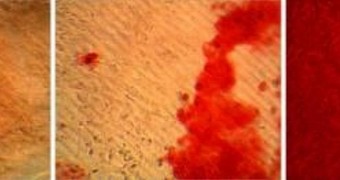A new trend in regenerative therapy is using cells extracted from various parts of the body to grow tissues that a damaged organ or system needs in order to recover from various injuries or diseases.
As explained in a recent paper in the journal Stem Cell Research and Therapy, evidence at hand indicates that certain cells found in human fat can help with bone and cartilage healing.
These cells all express a gene known to the scientific community as ALPL, and given the right incentives, they can be tricked into becoming either bone or cartilage.
For the time being, researchers rely on identifying surface proteins to pin down these cells that promise to revolutionize regenerative therapies for damages bones and cartilages. However, this procedure has a cell recovery rate of just 4%.
Researchers with Brown University in the US say that, rather than focusing on surface proteins, it's way better to look for the RNA produced when the cell's ALPL gene is expressed, EurekAlert informs.
In their paper in the journal Stem Cell Research & Therapy, they say that this can be easily achieved with the help of a fluorescent tag that binds to the cells expressing the aforementioned gene.
As noticeable in the photo accompanying this article, this fluorescent tag makes the bone-making cells in fat tissue stand out by turning them bright red, thus enabling a recovery rate of 9%.
“Approaches like this allow us to isolate all the cells that are capable of doing what we want, whether they fit the archetype of what a stem cell is or not,” explains specialist Hetal Marble.
Furthermore, “The paradigm shift is thinking about isolating populations that are able to achieve an end point rather than isolating populations that fit a strictly defined archetype.”
The scientists behind this research project imagine that, one day, this fluorescent dye will make it possible for doctors to simply take out bone-making cells from a patient's body and implant them at the site of a fracture in just one intervention.

 14 DAY TRIAL //
14 DAY TRIAL //